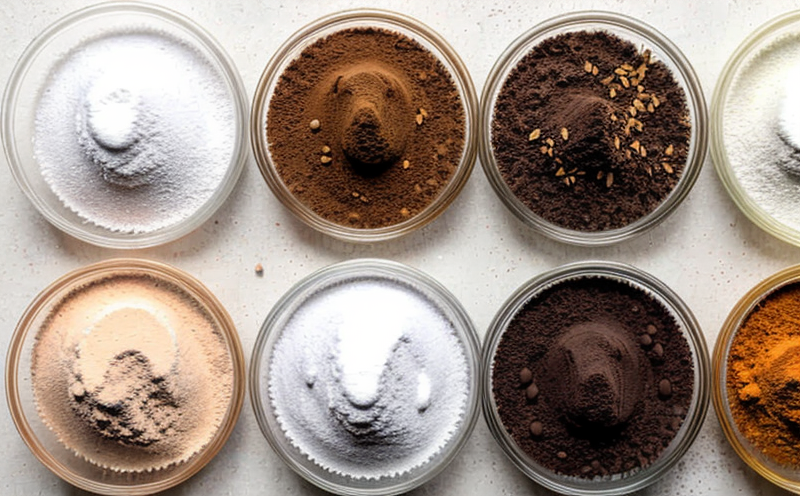AOAC 986.20 Saccharin Quantification in Candies
The AOAC International Standard Method 986.20 is widely recognized for quantifying saccharin, a popular sweetener, within candies and other food products. This method provides a robust protocol that ensures accurate measurement of saccharin content, which is crucial for product safety, compliance with labeling regulations, and quality control.
The AOAC 986.20 procedure involves several steps including sample preparation, extraction of saccharin from the test material, and analysis through high-performance liquid chromatography (HPLC). This method has been validated for its precision and accuracy, making it a gold standard in the industry.
In candies, saccharin is often used as an alternative to sucrose or other sugars due to its intense sweetness. However, manufacturers must ensure that the levels of saccharin are correctly reported and do not exceed legal limits set by regulatory bodies such as the Food and Drug Administration (FDA) in the United States.
| Step | Description |
|---|---|
| Sample Preparation | The sample is weighed accurately and ground finely. It is then extracted using a suitable solvent. |
| Saccharin Extraction | The extract is concentrated, acidified, and filtered to remove impurities. The saccharin is separated from other components. |
| HPLC Analysis | The purified saccharin sample is injected into the HPLC system for quantification. |
This method not only ensures compliance with regulatory standards but also provides data that can be used in R&D to optimize sweetener usage and enhance product quality. For instance, understanding saccharin levels helps in formulating candies that meet consumer expectations without compromising on safety.
Quality managers and compliance officers rely heavily on methods like AOAC 986.20 to ensure products are safe and accurate. R&D engineers use this data for product development, ensuring that the sweetener content is within acceptable limits as per industry standards. Procurement teams also benefit from such precise testing, especially when sourcing raw materials or ingredients.
The precision of AOAC 986.20 ensures that manufacturers can confidently meet regulatory requirements and maintain consumer trust. By adhering to this method, companies not only comply with international standards but also contribute to the overall integrity of the food industry.
International Acceptance and Recognition
- The AOAC International Standard Method 986.20 has gained worldwide recognition for its reliability in quantifying saccharin content.
- This method is accepted by major food safety regulatory bodies such as the FDA, the European Food Safety Authority (EFSA), and the World Health Organization (WHO).
- It is also recognized by numerous international standards organizations including ISO and ASTM for its robustness in analytical chemistry.
The widespread acceptance of AOAC 986.20 reflects its consistent performance across various laboratories, ensuring that the results are reproducible and reliable. This recognition ensures that manufacturers around the world can use this method with confidence, knowing it will yield accurate and consistent results.
Regulatory compliance is a critical factor in food safety, especially when dealing with sweeteners like saccharin. The AOAC 986.20 method provides a standardized approach that all laboratories can follow, ensuring uniformity in testing across different regions. This standardization helps prevent discrepancies and ensures that products are safe for consumers globally.
By adhering to this internationally recognized method, companies can ensure they meet the stringent requirements set by regulatory bodies. This not only enhances their reputation but also helps build consumer trust, which is paramount in today’s competitive market.
Environmental and Sustainability Contributions
The quantification of saccharin in candies through the AOAC 986.20 method plays a crucial role in environmental sustainability efforts. By ensuring that saccharin levels are accurately reported, this testing contributes to the overall reduction of waste and unnecessary resource consumption.
Accurate measurement helps manufacturers optimize their use of sweeteners, reducing excess usage which can lead to increased production costs but also minimize potential environmental impacts. Proper quantification ensures that only the necessary amount of saccharin is used in candies, thus contributing to more efficient resource utilization and reduced waste.
This method supports sustainability by aligning with industry standards that promote responsible manufacturing practices. By ensuring that products are safe and accurately labeled, it helps consumers make informed choices, which ultimately leads to a more sustainable food production system.
Use Cases and Application Examples
- Quality Assurance: Regular testing ensures that candies meet the required saccharin content levels as per regulatory standards.
- Product Development: Testing helps in formulating new candy products with optimal sweetener content.
- Compliance Monitoring: Continuous monitoring through AOAC 986.20 ensures compliance with international and local regulations.
- Consumer Safety: Accurate quantification of saccharin levels protects consumers from potential health risks associated with over-consumption.
The data obtained through AOAC 986.20 is invaluable for quality assurance departments, R&D teams, and compliance officers. It allows them to make informed decisions that enhance product safety and maintain regulatory compliance.
For example, a candy manufacturer might use this method during the development phase of a new product line. By accurately quantifying saccharin levels in prototypes, they can ensure that each piece meets the required sweetness without exceeding safe limits. This ensures not only legal compliance but also enhances consumer satisfaction.
Another application is in routine quality control checks where the method is used to verify that production batches meet specified standards. By using AOAC 986.20, manufacturers can ensure consistency across all products, which is essential for maintaining brand reputation and consumer trust.





